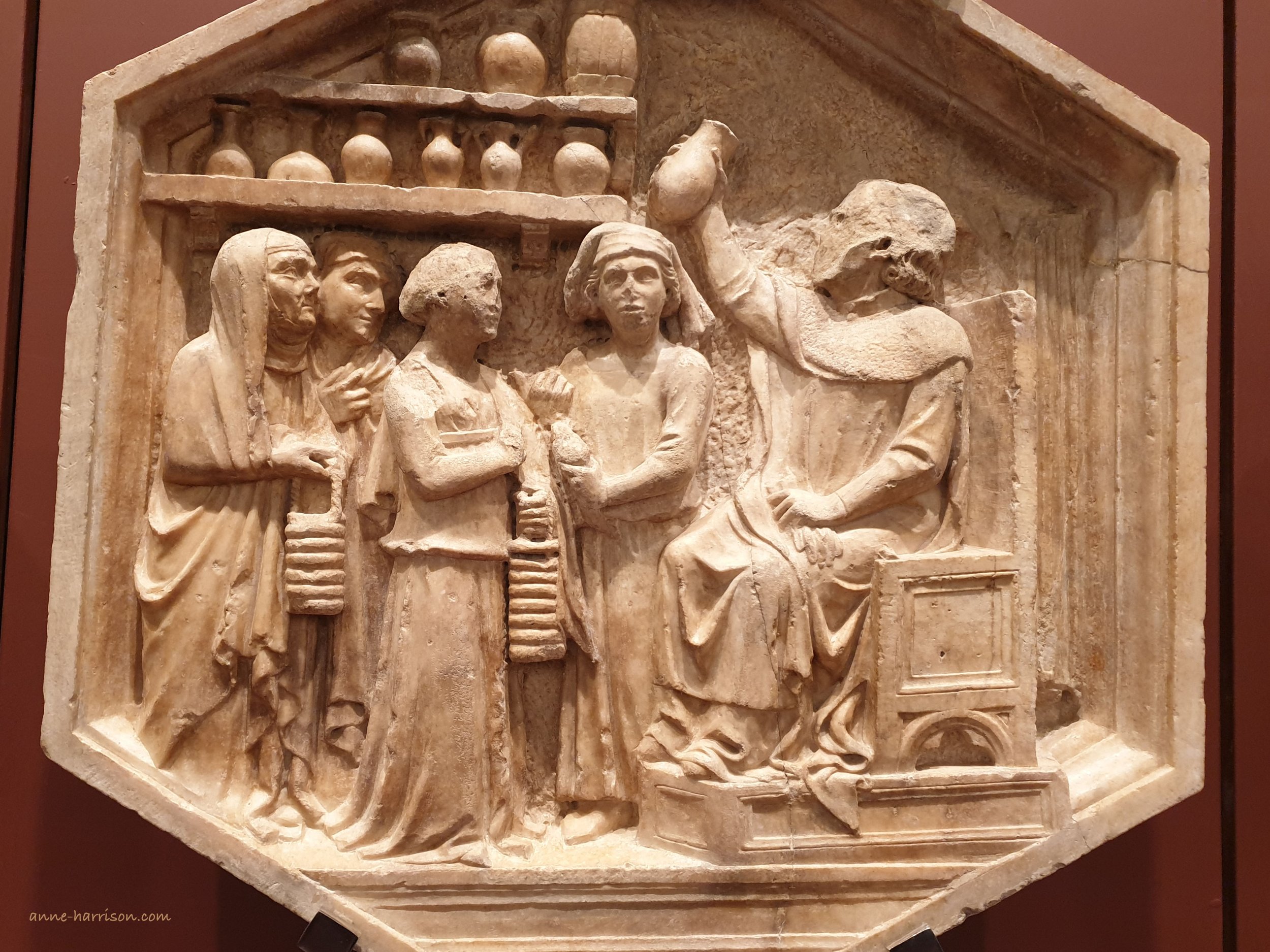The Fastest Knife in the West (End)
St Mary’s Paddington © A. Harrison
What to wear, what to wear?
Although I refuse to wear them, scrubs seems de rigueur these days. Many at work now have their own, with name and title boldly emblazoned across the top pocket. Yet were I to arrive at the hospital wearing a bottle-green coat over a bloody gown, the look completed with wellington boots, more than an eyebrow might be raised.
Not so for Dr Robert Liston. Born in 1794, he became so in demand for his surgical services patients would sleep in his waiting room for days waiting to see him. Liston tried to see every one, no matter their physical or financial condition.
Part of the reason for his popularity was the fact only about one in ten of his patients died on his operating table at London’s University College Hospital; for the surgeons at nearby St. Bartholomew’s, the loss at that time was about one in every four patients. Not good odds.
The doctor, Andrea Pisano , 1343 - 1348 © A. Harrison
The surgery in question was leg amputation. Without amputation, the chances of dying approached 100%. Since the advent of both anaesthesia and antibiotics lay in the far distant future, the only analgesia available for the patient was alcohol. No anaesthetic meant speed was of the essence, not only to minimise pain, but also to help improve survival. (Patients had been known to escape mid-operation and flee the operating room, an impressive feat with one dead leg.)
A few missing digits © A. Harrison
Dr Richard Gordon, a surgeon and medical historian, called Liston the ‘fastest knife in the West End.’ Liston’s record for an amputation was 28 seconds, although his average was around two-and-a-half minutes.
The performance began as soon as Liston entered the operating theatre. Gordon recalls how Liston would “leap across the blood-stained boards upon his swooning, sweating, strapped-down patient like a duellist, calling, ‘Time me gentlemen, time me!’ to students carrying pocket watches Everyone swore that the first flash of his knife was followed so swiftly by the rasp of saw on bone that sight and sound seemed simultaneous.”
To free both (ungloved) hands Liston often clasped the bloody knife between his teeth.
In her Notes on Nursing, Florence Nightingale states ‘there are many physical operations where ceteris paribus (all things being equal) the danger is in a direct ratio to the time the operation lasts; and ceteris paribus the operator’s success will be in direct ratio to his quickness’.
Yet Liston’s speed and showmanship could prove a mixed blessing. He once removed a patient’s testicles along with the leg that was being amputated.
Another time Liston also managed to amputate, along with the patient’s leg, a few fingers belonging to his surgical assistant. Then, while switching instruments, he managed to slash a spectator’s coat with a bloody knife. (The spectator, an elderly gentleman, was naturally wearing tails). Seeing blood on his suit and convinced he’d been stabbed, the gentleman in question had a heart attack, collapsed and died. It seems the surgical knife was contaminated, for both the luckless assistant and the patient later died following an infection of their wounds.
This remains the only known surgery in history with a 300% mortality rate.
Enjoy my writing? Please subscribe here to follow my blog. Or perhaps you’d like to buy me a coffee? (Or a pony?)
If you like my photos please click either here or on the link in my header to buy (or simply browse) my photos. Or else, please click here to buy either my poetry or novel ebooks. I even have a YouTube channel. Thank you!
Plus, this post contains affiliate links, from which I (potentially) earn a small commission.



